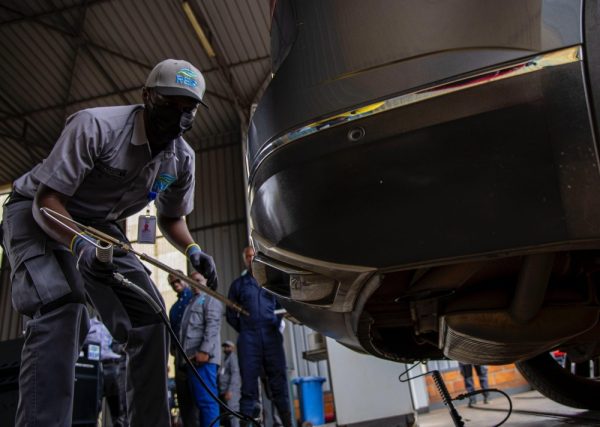Government aims to increase national savings from 12.4% to 25.9% of GDP by 2029
Rwanda is set to more than double its national savings rate from 12.4% in 2024 to 25.9% of gross domestic product (GDP) by 2029, as part of a new government initiative. This ambitious plan, known as the Financial Sector Development Strategy, aims to enhance long-term capital for investment while reducing reliance on foreign funding.
The strategy, which spans five years from 2024 to 2029, targets annual increases in savings, projecting a rise from 15.1% in 2025 to the ultimate goal of 25.9% in 2029. Herbert Asiimwe, Head of Financial Sector Development at the Ministry of Finance and Economic Planning (MINECOFIN), emphasized the need for improvement in the savings sector, stating, “We have achieved a lot, but we still have a couple of sectors to improve.”
Asiimwe highlighted the challenge posed by the current low level of savings, which has hindered the long-term financing necessary for the private sector. He noted that while short-term funds are available, the absence of long-term financing options remains a significant barrier. “We need to put a lot of effort into this,” he added.
The Plan
The government’s strategy includes expanding formal savings through enhanced pension schemes, digital savings products, and establishing connections between informal savings groups and banks. Additionally, it aims to promote private pensions, improve financial literacy, and introduce new retail investment tools such as private bonds and collective investment schemes.
Despite these plans, Asiimwe cautioned that the task is daunting, as a significant portion of the Rwandan population operates within the informal economy, and income volatility remains a pressing issue. Although financial inclusion has reached 96%, most financial activities occur outside formal institutions, which poses risks for those who may fall back into exclusion.
Regis Rugemanshuro, the chief executive at Rwanda Social Security Board (RSSB), which oversees the country’s pension and social security funds, described the strategy as “very ambitious, practical, and requiring a lot of collaboration to ensure alignment to achieve the target rates.” He emphasized the importance of building consistent and substantial savings among the population.
Rugemanshuro pointed to the Ejo Heza long-term savings scheme, established under law N° 29/2017, which aims to provide informal sector workers with access to pension benefits upon retirement. Currently, only about 8% of Rwanda’s workforce has access to long-term savings through pension schemes, leaving approximately 92% of workers, including motorcycle taxi operators and farmers, without such benefits.
To address this gap, RSSB is revamping the Ejo Heza Term Savings Scheme to allow savers limited access to their funds during emergencies, such as medical or educational needs. This reform, pending final approval, seeks to balance the need for long-term savings with short-term liquidity.
Rugemanshuro also noted that the agency is enhancing digital channels to facilitate easier access to savings products. “We want to make sure we are educating our members and informing them enough to understand how much they should be saving so that it contributes to a solid package when they retire,” he stated.
Furthermore, the government recently increased pension contributions from 6% to 12%, with plans to reach 20% by 2030. This move is expected to significantly boost the country’s savings ratio, according to Rugemanshuro.
However, the timing of this savings drive presents both opportunities and risks. Bob Nkubara, a senior analyst at SouthBridge Group, argued that if successful, Rwanda could unlock more domestic capital for investment and reduce external borrowing. Conversely, if the initiative falters, it could exacerbate inequalities between those who can save and those who cannot.
Rugemanshuro concluded that achieving the savings target will largely depend on collaboration and trust among stakeholders. “Our role as RSSB is to remain that catalytic partner that not only unlocks investments or allows them to grow but also supports the sector in building synergies,” he said.
Key Points
- Rwanda aims to increase national savings rate from 12.4% to 25.9% of GDP by 2029.
- The Financial Sector Development Strategy focuses on enhancing long-term capital and reducing foreign funding reliance.
- Plans include expanding formal savings, improving financial literacy, and promoting new investment tools.
- Only 8% of Rwanda's workforce currently has access to long-term savings through pension schemes.
- Recent pension contribution increases are expected to boost the country's savings ratio significantly.
Sources: Inside Rwanda’s five-year strategy to double savings rate

